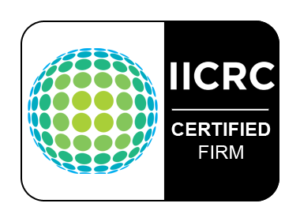New homes with major mold issues
New homes with major mold issues
Something I posted here about four years ago is, unfortunately, is still affecting the construction industry in Southern Ontario, https://mapleleafmold.ca/mold-growing-on-…der-construction/
As everyone knows, Toronto and the surrounding area is undergoing a huge building boom, particularly semi and fully detached homes. Stick frame, (using wooden stud and support products), is by far the predominant method of constructing homes quickly and cheaply. Many products used are composed of a blend of laminates and wood chips / wood dust as opposed to a rough sawn piece of whole wood.
As I drive by these site what concerns me is the continuing lack of concern surrounding the treatment and care of these materials once they are on site and have been installed. Not one site attempted to protect materials from water / snow. Not one.
Week after week I would drive by and see the material starting to “gray up”, (mold growth on the exterior of these wood products as they sit on site), and then get used during the construction. Once installed many houses sit and continuously grow mold.
The issue with this is that once building cladding, (brick or siding usually), and interior finishes are added, (drywall, stone), you have a home with a built in mold problem. Any it will be impossible to remove.
I have worked with many clients who are sensitive to mold growth, https://mapleleafmold.ca/hypersensitivity-to-mold/ and they’ve just moved into their new home and cannot get rid of the health issues they have.
What are the contributing factors?
There are two key driving factors leading to mold growth in new construction: improper installation of vapor barriers and poor lumber storage.
The vapor barrier is the home’s initial line of defense against moisture intrusion. A poorly installed vapor barrier will allow moisture or water to intrude. The slightest rip or tear can negate the purpose of the barrier and allow moisture intrusion, which can create an opportunity for mold to grow in between the concrete slab and the layers of material that you plan to install on top of the slab.
This is exactly what happened during my new construction build and as a result, I had immediately requested the builder to switch to tile. The reason I selected tile was because tile would be bonded directly to the slab, removing the additional layers where moisture can become trapped in between.
Simply put, a vapor barrier is supposed to stop water and moisture from intruding into the slab but it only works if it’s perfectly sealed.
I plead with you, please take your time when installing a vapor barrier, and know that the slightest tear could potentially lead to costly remediation in the future.
Another key issue that builders often neglect is lumber storage. When you accept delivery of lumber, is it stored on the ground, exposed to moisture? If it sits there for weeks at a time before the crew is ready to erect the frame, odds are it will be exposed to the elements.
On the surface, this might not sound too bad, but from a scientific standpoint, mold is very common in the soil. When it rains, having the lumber resting in the mud can cause excess moisture to remain in the wood for much longer than 48 hours. This creates the perfect opportunity for mold to grow on the lumber, considering mold can grow in as short a time as 48 hours.
A simple solution to prevent this would be to deliver the lumber on cribbing that can keep the lumber elevated off of the soil. From there it can be protected from the elements using tarps, until the framers are ready to begin.
The next problem as it relates to lumber is the presence of moisture as it’s insulated. This can be especially dangerous if you are utilizing spray foam as your preferred form of insulation. When you apply spray foam on lumber with a high moisture content, the spray foam will keep that moisture present by trapping the moisture in between the wood and insulation. This causes another opportunity for mold to grow.
Implementing a dehumidification process to dry out the space properly before installing any insulation or drywall will go a long way in ensuring that you don’t have any opportunity for mold to grow throughout the beginning stages of construction.
In addition to vapor barriers and lumber, I highly recommend every builder also be mindful of the temperature differentials between conditioned spaces and non-conditioned spaces. I recently had a client where the garage bays were open to the first floor living area without any separation. This allowed non-conditioned humid air to mix with conditioned cool air and create a dew point on the back of the ceiling. This resulted in mold growth throughout his ceiling on the first floor. The ceiling had to be remediated and from there, structural blocking had to be installed to prevent the exchange of air from the garage to the living space.
Additionally, ensuring that attics are well insulated against the living spaces below to prevent a dew point from developing due to temperature differentials. This is especially important with duct work as you’ll develop condensation around the duct work if it isn’t appropriately insulated. Another key factor is to seal up well around the register boxes and any other penetrations where ductwork and other mechanical components enter from a conditioned space into a non-conditioned space.
The awareness of the harmful effects mold has on the body is growing every year. With that, we need to all do our best to prevent this issue from occurring in new construction. A few simple steps can prevent a major mold headache for you and your customers.




Call 416-254-7256 to talk with us about your issue anytime.
Maple Leaf Mold Inc. is a certified mold / asbestos / lead removal and environmental air analysis company located in Toronto that uses certified IICRC technicians for all testing and remediation projects.
We are a professionally licensed firm experienced in testing, verifying and removing Mold / Asbestos / Lead and other environmental contaminants as well as providing disinfection services to control and kill biological contaminants.
